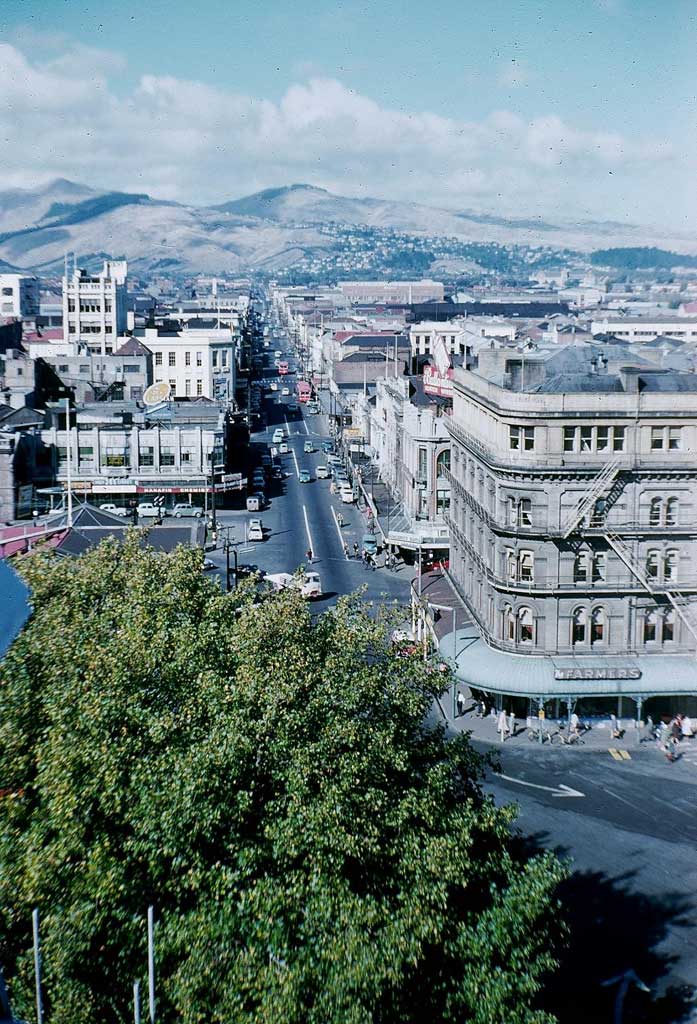By the time The Christchurch Star was published on the afternoon of Saturday 23 November 1963, it would have been hard to find someone in Christchurch who had not already heard that the President of the United States, John Fitzgerald Kennedy had been assassinated earlier that morning (7:00am New Zealand time).
But when the initial shock had passed what was the rest of the day like for the people of Christchurch?
Just an ordinary day...
For George Hewitt, a retiree, and his wife, Frances, the day could not have started any worse. In the early hours of the morning, their house at 83 Waimairi Road had burned down. Perhaps they were already recovering at their son’s house in Athol Terrace when they heard the news of the assassination. If they were already looking for a new house then they could purchase a bungalow in Cashmere for £3430 or wait to attend the auction of 412 Cashel Street.
Michael James Russell, a 21 year old motor assembler, was no doubt feeling sorry for himself after being both fined and forced to pay for the repairs to the window of a van he damaged with his fist on Manchester Street at 1:40am that morning.
William Leslie Travers, the manager of the Christchurch branch of the Bank of New Zealand spent the day trying to smooth over an embarrassing mistake. The old bank building on the corner of Cathedral Square was ready to be demolished in preparation for the construction of a new bank. An auction was being held to sell off the building’s fittings. When people turned up they found that someone had accidentally left confidential paperwork detailing the accounts of the bank’s customers spilled all over the first floor.
For many of the city's children, the events unfolding on the world stage may have seemed irrelevant in comparison to the excitement of the Hay's annual Christmas parade which took place that morning on the banks of the Avon River.
With his engagement to Lynne Stanton of Riccarton publicly announced, Reginald Watts of Bryndwr was possibly planning a visit to Kennedy’s jewellery showroom at 244 High Street to look for a suitable set of wedding rings.
Meanwhile Francis Curtis, who had already spent seven weeks sleeping in the back of his own jewellery shop on Cashel Street in order to deter burglars while it underwent repairs, still had three more weeks left.
Undoubtedly some people were considering purchasing their first television set. If they were prepared to wait for ‘quality’ then they could order an Admiral television through the product’s New Zealand distributors, H.W. Clarke.
Beverley Pollock and Paul Amfelt of Dunedin’s Globe Theatre Company would have spent the day waiting to read the Star’s review of their performance of the Norwegian playwright Henrik Ibsen’s Rosmersholm which they had given the night before at the Museum Theatre.
The young adults who had recently finished school would have been searching and applying for jobs. For young men there were a variety of apprenticeships available or perhaps a chance to start a career as an accountant with a firm such as Cyclone Industries, as a junior clerk at Andersons Limited or in insurance with the National Insurance Company of New Zealand Limited. Options for young women were limited to positions such as a clerk at Gordon and Gotch on Tuam Street, an office assistant at Woolworths in Sydenham or a sewing machinist at Arthur Ellis and Co.
Meanwhile Randini, a comedy magician and fire eater, was looking for work performing at ‘all types of functions’.
As the day drew to a close, some were perhaps wondering whether they should make the effort to go and see Lawrence of Arabia given that it was in its final week at the Odeon Theatre on Tuam Street.
Conspiracies...
The Saturday 23 November 1963 issue of The Christchurch Star has often been linked to the conspiracy theories which surround the assassination. Some claim that the issue contained information which could not have been readily known by the staff working to meet the afternoon publication deadline. However these claims have been disproven by Bob Cotton, who was a reporter working for The Christchurch Star on that fateful day. Efficient global communication, combined with the fact that the The Christchurch Star already possessed material on the leading figures in the story in its archives meant that the staff had plenty of relevant information to work with.
Despite this, copies of the issue have often been requested by international researchers for use as source material. Containing 36 pages in total, news of the assassination is only covered on three pages. While many of these researchers may have dismissed the rest of the newspaper's contents, the remaining pages give us a glimpse into what was for many people in Christchurch just an ordinary Saturday.
Find out more
- View the digitised copy of The Christchurch Star 23 November 1963 in our digital collection.
- Read about the connection between The Christchurch Star and Kennedy assassination conspiracy theories.
- Library resources on John Fitzgerald Kennedy
- US National Archives documents about John Fitzgerald Kennedy's assassination including newly released files.



Add a comment to: Kennedy Assassinated! What were you doing on 23 November 1963?